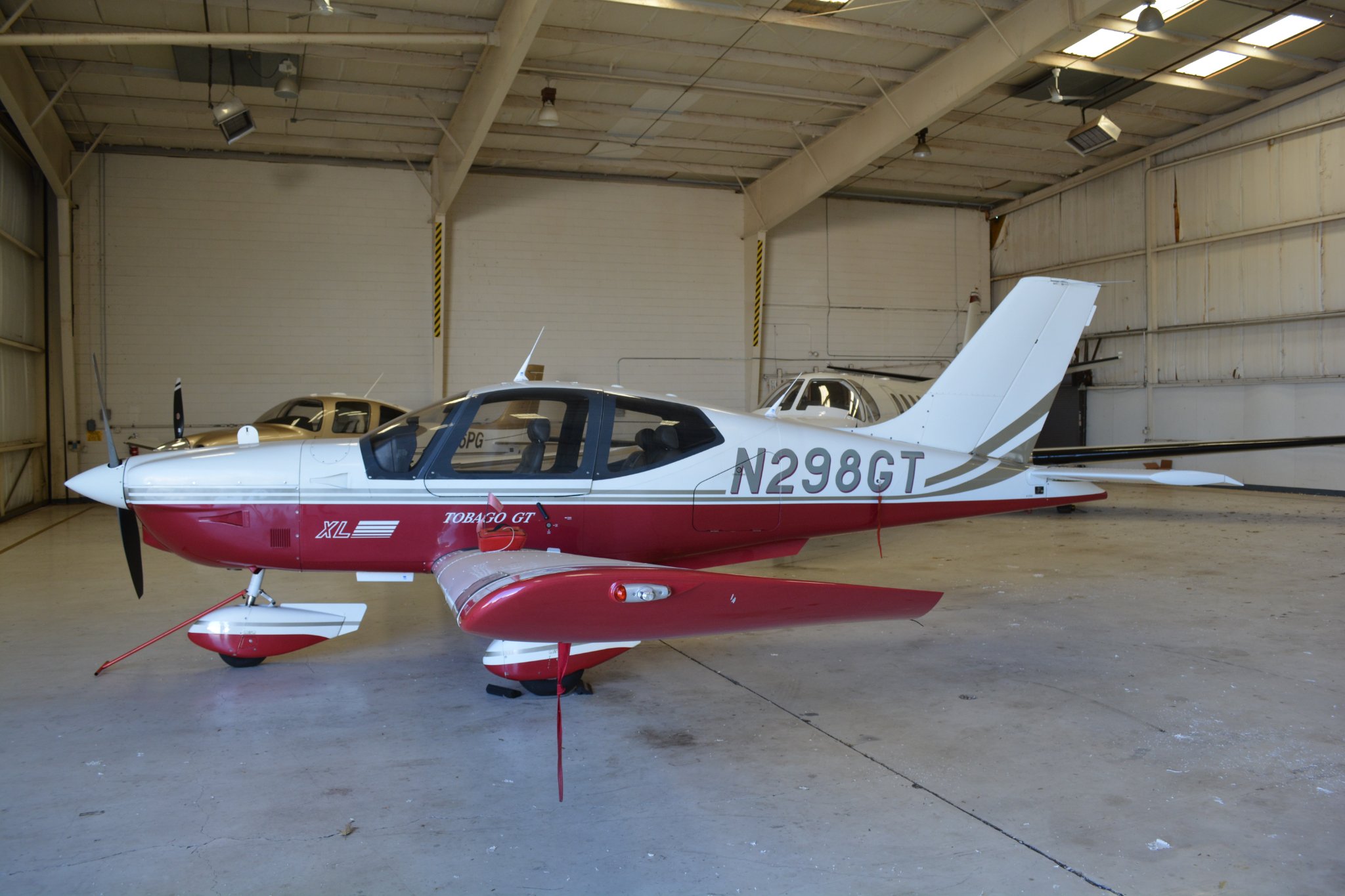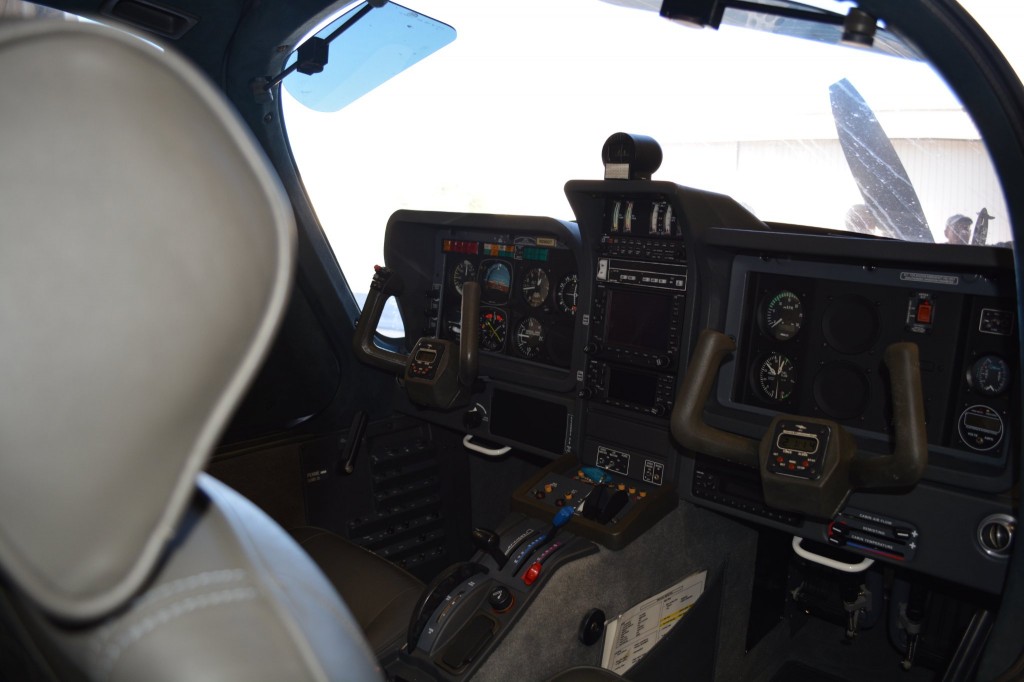The Aircraft Spotlight feature looks at an airplane type and evaluates it across six areas of particular interest to flying clubs and their members: Operating Cost, Maintenance, Insurability, Training, Cross-Country, and Fun Factor.
 When most pilots hear the name Socata, images of the cabin class TBM turbo-prop come to mind. But Socata also produced the Trinidad and Tobago, low-wing piston aircraft similar to the Piper Cherokee. The fixed gear TB-200 Tobago XL GT features a spacious cabin with large windows and performance that falls in between an Archer and an Arrow. Octopus Flying Club based in Maryland and Florida should know. It operates all three types of aircraft, having just acquired a 2003 TB-200, the second Socata it has owned. Treasurer and Chief Maintenance Officer George Cois shares the club’s experience operating the Tobago.
When most pilots hear the name Socata, images of the cabin class TBM turbo-prop come to mind. But Socata also produced the Trinidad and Tobago, low-wing piston aircraft similar to the Piper Cherokee. The fixed gear TB-200 Tobago XL GT features a spacious cabin with large windows and performance that falls in between an Archer and an Arrow. Octopus Flying Club based in Maryland and Florida should know. It operates all three types of aircraft, having just acquired a 2003 TB-200, the second Socata it has owned. Treasurer and Chief Maintenance Officer George Cois shares the club’s experience operating the Tobago.

Operating Cost (4 stars)
If your club is looking for an aircraft with the flight characteristics and operating costs between a Piper Archer and Piper Arrow with a little more style, the Socata Tobago may be exactly what you’re looking for.
“It has the same engine as the Arrow, but it doesn’t have retractable gear. So you don’t have the expense of maintaining the retractable gear,” George said. “It burns the same fuel as the Arrow, but because of the fixed gear, it’s about 10 knots slower, but it’s 10 knots faster than the Archer.”
The four-seat, fixed-gear Tobago cruises at 135 knots while burning 10 gph at 75 percent power. Octopus rents its Tobago for $124 an hour, tach time wet. The Arrow rents for $137 an hour, the Archer is $112 an hour.
The purchase price on a Tobago varies depending on the model and year, with the original TB-10 from the late 1970s and early 1980s starting around $55,000 and newer TB-200s, with larger engines and better avionics, going for about $130,000. Octopus Flying Club picked up its 2003 TB-200 Tobago XL GT with a 200-hp, fuel injected IO-360, for $113,500.
Maintenance (4 stars)
With a common engine and fixed gear, maintenance is straightforward. “I think it’s cheaper to maintain because all your controls are pushrods and gimbal joints, so you don’t have cables,” George said. “The only cable in the airplane is the trim wheel. Everything else is a push rod, so where our other planes every so many years the cables need to be adjusted or re-rigged, you don’t have that with a Socata.”
Owners have to be careful of the gull-wing doors. If it’s breezy or gusty, you’ll need to have a firm grip on them. Getting in and out is a little different technique as well. The door doesn’t open all the way down to the wing, so you’re stepping over about a six-inch lip. Octopus has a certain way to get in and out of the aircraft so you don’t break the seat backs of the headrests. The club also has a certain way it does the pre-flight.
Insurability (5 stars)
The Socata is a very insurable aircraft. The insurance company did not include any checkout requirements other than a CFI check ride, however the club has members take a written test based on the Pilot Operating Handbook before their check flight.
Octopus pays $3,965 a year to insure the Tobago, compared with $2,800 for the Arrow. The difference is the hull value. “We have the TB-200 insured at $120,000 whereas we have the Arrow at $70,000. As far as the liability, the costs are the same,” George said. Octopus carries $1 million aircraft liability and has a deductible of $250 for incidents when the plane is not in motion, or $1,000 in motion.
 Training (4 stars)
Training (4 stars)
Octopus allows the aircraft to be used for IFR training, but prohibits primary instruction. For that, students have to use the club’s Warrior. However, a flying club could use the Tobago for primary training as long as their insurance company approved it for that use.
Handling is just like flying a Piper, George said. “They’re just as forgiving. I find it very stable in turbulence. The crosswind component for the Socata is 25 knots, where your Piper is 17 knots.”
Cross Country Travel (4 stars)
“I think it’s a great cross country aircraft,” George said. “It’s a 135-knot aircraft and has a KAP-150 autopilot with altitude hold so it will fly with a heading bug or your GPS NAV course.”
The Tobago has two doors, which George said is really nice since the pilot can get out without the passenger having to move, and the plane features a roomy interior with excellent visibility. The windows on the doors wrap over the top four inches, and the same thing with the rear window. “One of the remarks I get with people that fly with me is they are just amazed at how good the visibility is,” George said.
The maximum takeoff weight is 2,500 pounds and the useful load is around 1,000 pounds. It has a good size baggage door and holds 143 pounds in the baggage compartment. The Tobago holds 55 gallons with 53 gallons usable. “The truth is usually it will outlast your bladder. You’re able to fly five hours and still have your reserves; that’s a long time to sit,” George said.
Fun Factor (4 stars)
“The interior of the Socata makes you feel like you're sitting in a fancy sports car. You have the console that runs between the seats so you can’t slide through like you do in a Piper,” George said. “People who see it for the first time, say it looks like a sports car inside. That’s what it looks like and feels like.”
Most importantly, the members of the club love flying the airplane and say it’s just a fun plane to fly.
Overall (4 stars)
The Socata TB-200 Tobago XL GT is a good-looking plane that is easy to fly and reasonable to operate and maintain. Its versatility as a cross-country aircraft or a trainer also makes it a practical choice. For the club that wants to distinguish itself from the traditional Piper or Cessna line with an aircraft that has a little more style (those gull-wing doors and sports car interiors will get you noticed), the Tobago is a good way to go.